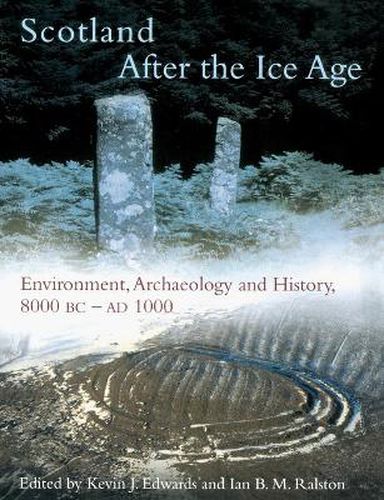Readings Newsletter
Become a Readings Member to make your shopping experience even easier.
Sign in or sign up for free!
You’re not far away from qualifying for FREE standard shipping within Australia
You’ve qualified for FREE standard shipping within Australia
The cart is loading…






This text charts the environmental transformation of Scotland from the end of the Ice Age in an empty land 10,000 years ago to the Viking invasions of an established society 9000 years later. When the icefields and glaciers disappeared, forests covered the land and sea level rose to create the Hebridean islands. Elk, aurochs, bear, boar, red deer, beaver and horse crossed the land bridge from Europe to colonize the land, first followed by hunter gatherers and later by waves of Celts, Romans, Scots, and Normans, each marking the landscape in distinctive ways. This book brings together environmental, ecological, historical, geological, and archaeological approaches to show how changing climatic conditions and this sequence of cultural impacts shaped the succession of Scottish landscapes which have led to its present unique, beautiful, fleeting forms and variety. The 17 authors are scholars from a range of fields, all writing for students and general readers. The first six chapters consider interactions of human ecology, climate, landscape, soils, vegetation and faunal change. The next seven are a chronological narrative history of Scotland’s environment over 9000 years. The final chapter unites these systematic and historical approaches. The book is extensively illustrated with maps and photographs and includes an extensive guide to further reading.
$9.00 standard shipping within Australia
FREE standard shipping within Australia for orders over $100.00
Express & International shipping calculated at checkout
This text charts the environmental transformation of Scotland from the end of the Ice Age in an empty land 10,000 years ago to the Viking invasions of an established society 9000 years later. When the icefields and glaciers disappeared, forests covered the land and sea level rose to create the Hebridean islands. Elk, aurochs, bear, boar, red deer, beaver and horse crossed the land bridge from Europe to colonize the land, first followed by hunter gatherers and later by waves of Celts, Romans, Scots, and Normans, each marking the landscape in distinctive ways. This book brings together environmental, ecological, historical, geological, and archaeological approaches to show how changing climatic conditions and this sequence of cultural impacts shaped the succession of Scottish landscapes which have led to its present unique, beautiful, fleeting forms and variety. The 17 authors are scholars from a range of fields, all writing for students and general readers. The first six chapters consider interactions of human ecology, climate, landscape, soils, vegetation and faunal change. The next seven are a chronological narrative history of Scotland’s environment over 9000 years. The final chapter unites these systematic and historical approaches. The book is extensively illustrated with maps and photographs and includes an extensive guide to further reading.